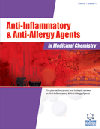
Full text loading...
It is possible for psoriasis to manifest at any point in a person's life, regardless of their age, gender, or geographic location. It is a chronic immune-linked inflammatory skin illness that affects individuals of various racial and ethnic origins. It is recognized to be a long-lasting condition. Because of the significant contribution that natural products have made, there has been a significant advancement in the treatment of skin illnesses such as psoriasis. The biggest number of phytochemicals derived from a wide range of plants and herbs are now being used in a variety of applications throughout the whole world. Additionally, a number of phytochemicals, including aloe-emodin, psoralen, curcumin, and others, have been effectively extracted in pure or clear form, and they have shown a great deal of efficacy in the treatment of psoriasis illness. There is evidence that few herbal remedies are effective, and the occurrence of these phytochemicals provides more proof. When synthetic medications are used for chronic therapy, they may cause a variety of adverse consequences; hence, the exploration of natural pharmaceuticals can give a successful natural treatment with a minimal amount of adverse effects. Within the scope of this concise review, a number of plant sources that possess anti-psoriatic activity are investigated, and the antipsoriatic effects of these plant sources are shown on a number of animal models using particular pathways.

Article metrics loading...

Full text loading...
References


Data & Media loading...

